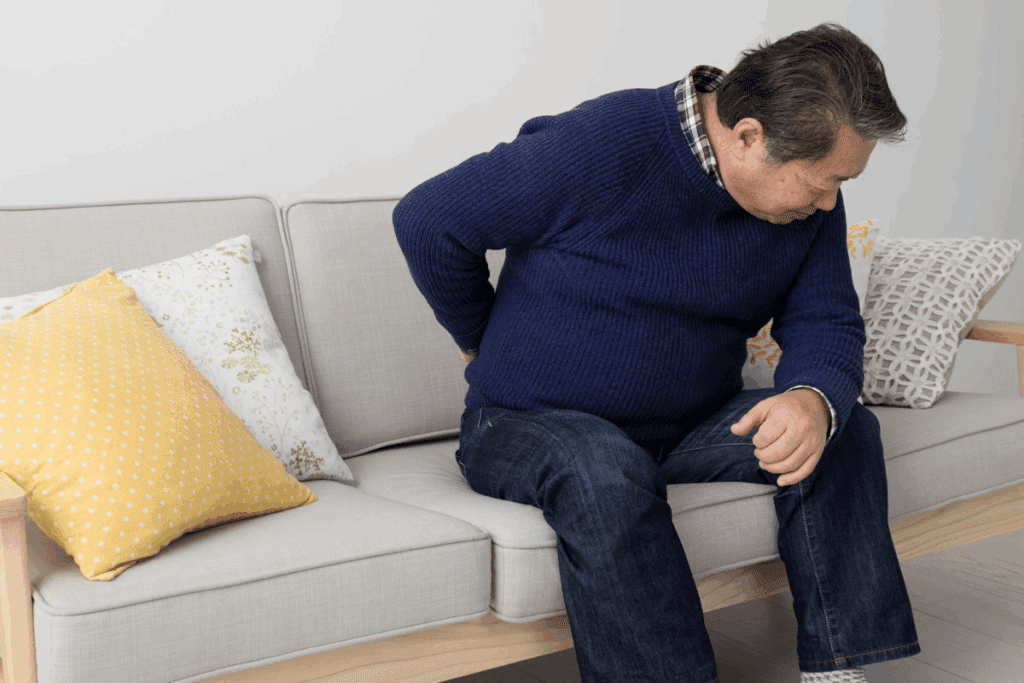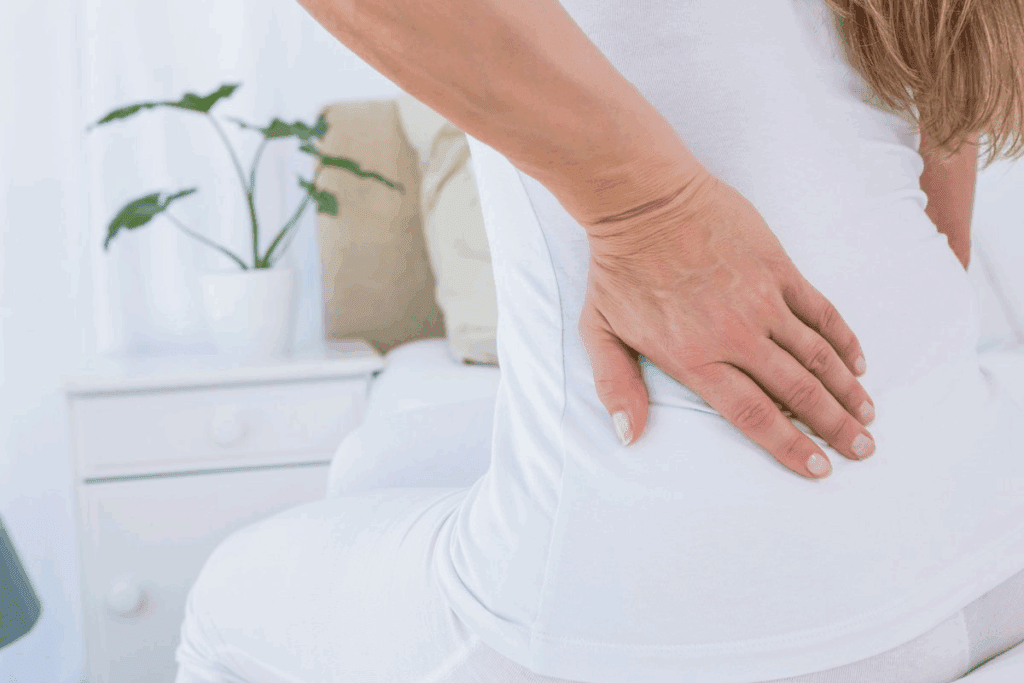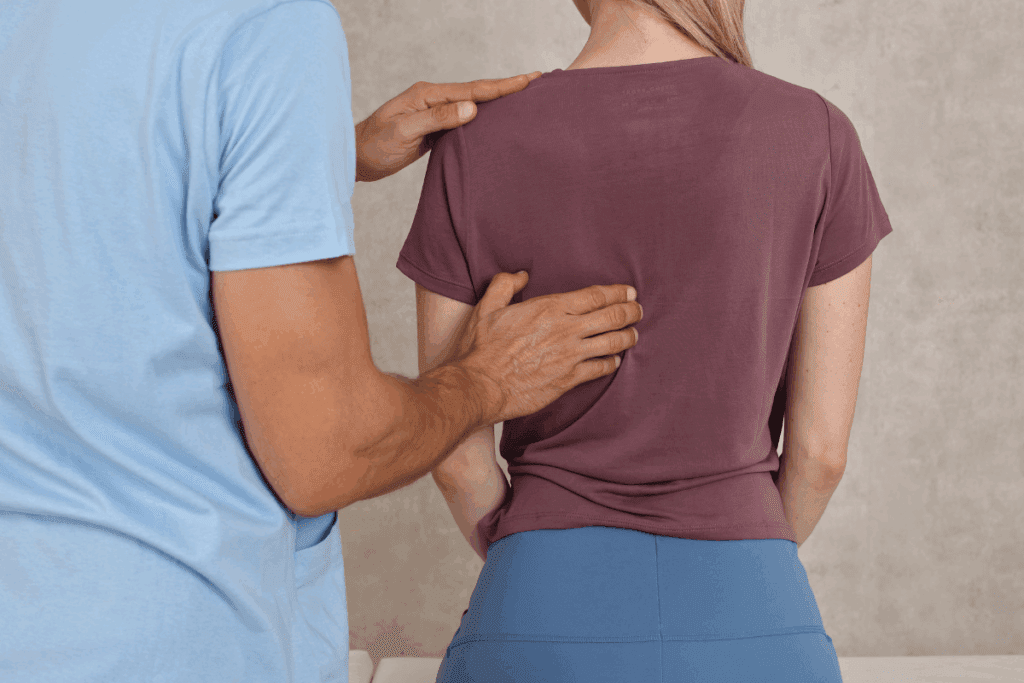
Passing a kidney stone is often described as one of the most painful experiences a person can endure. At Liv Hospital, we understand the severity of this condition. We are committed to providing expert care and support throughout your treatment journey.
Kidney stones are hard objects made of minerals and salts that form inside the kidneys. When these stones move through the urinary tract, they can cause severe pain. While the pain associated with passing a kidney stone is typically not life-threatening, it is important to seek medical attention. This is to prevent any possible complications.
We know that experiencing kidney stone pain can be overwhelming. It’s natural to wonder about the risks involved. Our team is dedicated to delivering world-class healthcare. We provide complete support for international patients.

To understand kidney stones, it’s important to know their types, causes, and risk factors. These are key for preventing and treating them. Kidney stones are hard deposits that form in the kidneys when there’s an imbalance in urine substances.
Kidney stones come in different types based on what they’re made of. The most common types are:
Many factors can lead to kidney stones, including diet, how much you drink, and your overall health. Some common causes and risk factors are:
Knowing about the types of kidney stones and their causes helps you take steps to prevent them. It also helps you manage symptoms better.

Kidney stones are a big health problem worldwide. They affect a lot of people, and their numbers are growing. This makes them a major concern for health globally.
About 1 in 5 men and 1 in 10 women will get kidney stones by age 70. This shows how big a problem kidney stones are for everyone.
Research says 10% of people will get a kidney stone at some point. Who gets them can vary. This depends on things like genes, diet, and lifestyle.
“The lifetime risk of developing a kidney stone is estimated to be around 11% for men and 6% for women,” a study found. This difference shows why we need to understand who is at risk.
Many things can affect your chance of getting kidney stones. Age, gender, and ethnicity are big factors. For example, men are more likely to get them than women, and the risk goes up with age. Also, if your family has a history of kidney stones, you’re more likely to get them too.
What you eat and drink, and some health conditions, also play a part. Eating too much sodium and not enough calcium can raise your risk. So can being overweight, having diabetes, or high blood pressure.
It’s key to know who is at risk and why. This helps us make better plans to prevent kidney stones. By focusing on high-risk groups and changing things we can control, we can lower the number of people affected by kidney stones.
Passing a kidney stone is very painful. It’s one of the most painful things a person can go through. The pain is so bad it can really affect your life.
The pain from passing a kidney stone is very severe. It feels like sharp pains in the lower back or side. These pains can spread to the abdomen and groin.
This pain is on the higher end of the pain scale. It’s like the pain of childbirth or severe burns.
The pain can vary in intensity. Some people might feel only mild discomfort. But others might feel such severe pain that they need to see a doctor right away.
Many people who have passed a kidney stone say the pain was “agonizing” and “unbearable”. One patient said,
“The pain was so severe that I couldn’t sit or find a comfortable position. It felt like a sharp knife stabbing me in the side.”
These stories show how intense the pain is. It can really change a person’s life.
The pain from passing a kidney stone comes from the stone moving through the narrow urinary tract. This movement can cause blockages, irritation, and inflammation. All these lead to severe pain.
The body’s reaction to the stone’s movement also adds to the pain. Muscle spasms and the release of pain-causing chemicals make it even worse.
Knowing why the pain happens is key. It helps doctors find ways to treat the stone and manage the pain.
Knowing how a kidney stone moves through your body is key to spotting its signs and getting help fast. A kidney stone usually doesn’t show symptoms until it moves in the kidney or goes into a ureter. This causes very bad pain.
A kidney stone starts when minerals in urine crystallize and form a hard deposit. As it grows, it might stay in the kidney or move to the ureters. The stone’s movement can cause severe pain, often described as one of the most intense pains experienced by humans. “I’ve never felt anything like it,” says a patient who experienced passing a kidney stone. “It was like a sharp, stabbing pain that wouldn’t subside.”
When the stone moves into the ureters, it can cause lower back and side pain. These are key signs of kidney stones. This pain can spread to the groin and may come with nausea and vomiting. The pain from kidney stones is so bad that you need to see a doctor right away.
It’s vital to spot these symptoms early to get the right medical care. By knowing how a kidney stone moves, patients can handle the pain better and get the treatment they need.
It’s important to know all the symptoms of kidney stones to get help quickly. Pain is a big sign, but other symptoms can also tell us a lot.
Kidney stones can cause more than just pain. You might feel nausea and vomiting because of the pain or how your body reacts. Also, fever and chills can happen if there’s an infection.
Other signs include pink, red, or brown urine from blood, or cloudy or foul-smelling urine. You might also need to go to the bathroom a lot. This is because the stone irritates your bladder and urinary tract.
Knowing when to go to the emergency room is key. Look for these signs: severe pain that won’t go away, vomiting blood, fever over 101.5°F (38.6°C), or signs of infection like chills and sweating.
| Symptom | Description | Action |
| Severe Pain | Pain that doesn’t subside | Seek Emergency Care |
| Vomiting Blood | Presence of blood in vomit | Seek Emergency Care |
| High Fever | Fever above 101.5°F (38.6°C) | Seek Emergency Care |
| Signs of Infection | Chills, sweating | Seek Emergency Care |
If the pain from a kidney stone suddenly stops, it doesn’t mean everything is okay. Sometimes, the pain goes away if the stone moves to a less bothersome spot. But, it’s not a sign that the stone has gone away. You should see a doctor to check on the stone and figure out what to do next.
Not everyone feels pain when passing a kidney stone. Some people might not feel much or any pain at all. While most people say it hurts a lot, there are some who don’t.
Some kidney stones, called “silent stones,” can pass without pain. This happens more with smaller stones. They can move through the urinary tract without causing much trouble or pain.
The stone’s location also matters. Stones that stay in the kidney or pass into the ureter without blocking are usually painless.
Many things can change how much pain you feel when passing a kidney stone. The stone’s size is a big factor. Smaller stones might not cause pain, but bigger ones can because they can block the way.
How much pain you can handle also matters. People can handle pain differently. This can affect how much pain you feel from passing a stone.
Key factors influencing pain levels include:
Knowing these factors can help you understand what to expect and make better choices for treatment.
Kidney stones can sometimes be very dangerous if not treated right away. We will look at the serious problems they can cause. It’s key to get medical help quickly.
Kidney stones can cause serious issues like infections, sepsis, and kidney failure. A stone blocking urine can cause an infection. If this infection spreads to the blood, it can be deadly.
Also, kidney stones can damage the kidneys and lead to failure. Infection and sepsis are very dangerous because they can get worse fast. Symptoms include fever, chills, and a lot of pain. Quick treatment is very important to avoid serious harm or death.
Death from kidney stones is rare in places with good healthcare. But, in areas with less access to healthcare, the risk is much higher. This shows how important it is to get medical help if symptoms don’t get better.
Knowing these facts helps us see why getting medical care is so important. Early treatment can greatly lower the risk of serious problems.
It’s vital to know the signs of serious problems. Look out for severe pain, fever, chills, and trouble urinating. If you notice these, you should get medical help right away.
Being aware of these signs and understanding the risks helps us take action. We can manage our condition and avoid serious problems.
Managing kidney stone pain is key to a better life for those affected. The pain can be very hard to bear, but there are ways to make it easier.
For really bad pain, doctors often prescribe medicine. Nonsteroidal anti-inflammatory drugs (NSAIDs) and opioids are common choices. NSAIDs, like ibuprofen, can cut down inflammation and ease pain. Opioids work well for severe pain but should be used carefully because of the risk of addiction.
“Pain is a personal thing, and what helps one person might not help another,” says Medical Expert, a top urologist. “So, it’s important to work with a doctor to find the best way to manage pain.”
There are also home remedies and non-medical ways to ease kidney stone pain. Drinking lots of water is key to flushing out the stone. Using heat, like a warm bath or heating pad, can also help.
The mental effects of severe kidney stone pain are real. The worry and stress can be too much. Cognitive-behavioral therapy (CBT) and other mental health support can help deal with these feelings.
Quick treatment can prevent lasting harm, and managing pain is a big part of that. By using medicine, home remedies, and mental support, people can handle their pain better and feel better overall.
At Liv Hospital, we use the latest medical methods to diagnose and treat kidney stones. This ensures our patients get the best care. To find out the size, location, and type of stone, we do various tests. These tests help us plan the treatment.
Modern methods are key in finding kidney stones accurately. We use:
A study in the Journal of Urology shows CT scans are very good at finding kidney stones. They have a sensitivity of over 90%
“CT scans are now the top choice for finding kidney stones. They are very accurate and can spot other causes of belly pain.”
Many patients can be treated without surgery. These options include:
| Treatment Option | Description | Benefits |
| Hydration | Drinking lots of water | Helps pass the stone naturally |
| Pain Management | Medicines for pain relief | Reduces discomfort |
| Medical Expulsion Therapy | Drugs to aid stone passage | Makes passing the stone easier, less need for surgery |
For big stones or those not helped by non-surgical treatments, surgery might be needed. Options include:
At Liv Hospital, we aim to lead in medical technology and methods. This ensures our patients get the most effective and least invasive treatments.
To prevent kidney stones, you need to make changes in your diet, drink more water, and adopt healthy habits. These steps can greatly lower your chance of getting kidney stones again.
Your diet is key in preventing kidney stones. Eating less sodium and animal protein can help. High sodium can increase calcium in your urine, which can cause stones. Also, eating a lot of animal protein can raise your risk of uric acid stones.
Drinking enough water is also very important. It helps dilute your urine, making it less likely for stones to form. Aim to drink 8-10 glasses of water a day. But, how much you need can depend on your climate, how active you are, and your health.
Key Dietary Recommendations:
Along with diet and hydration, some medicines and lifestyle changes can help too. For example, thiazide diuretics can lower calcium in your urine, reducing calcium stone risk.
Being active and keeping a healthy weight are also important. Being overweight can increase your risk of getting kidney stones. So, eating right and exercising can help manage your weight.
| Preventive Measure | Description | Benefit |
| Dietary Modifications | Low sodium, low animal protein diet | Reduces risk of stone formation |
| Hydration | Drinking 8-10 glasses of water per day | Dilutes urine, reducing stone risk |
| Medications | Thiazide diuretics | Reduces calcium in urine |
A study in a medical journal says, “Preventing kidney stones is very important for those who have had one before, as they are at high risk of getting another.”
“The best way to prevent stones is by changing your diet, drinking enough water, and sometimes taking medicine.”
By following these prevention tips, you can greatly lower your risk of getting kidney stones again. This means you can avoid the pain and problems they cause.
We’ve looked into the world of kidney stones, from how they form to the pain of passing them. We know they can be a big health problem. But, with the right steps, people can live healthy lives after dealing with kidney stones.
To manage kidney stones, a good care plan is key. This includes the right treatment and steps to prevent them. By changing what we eat, drinking more water, and making lifestyle changes, we can lower the chance of getting them again.
Thanks to new medical tech and treatments, dealing with kidney stones is getting better. We can now find and treat them more accurately, reducing serious problems. By being proactive, people can beat the challenges of kidney stones and live a healthy life without them.
But living beyond kidney stones is more than just beating the physical pain. It’s about taking back control of our health. We urge people to team up with their doctors to create a plan for managing and preventing kidney stones.
Passing a kidney stone is very painful. It’s often compared to childbirth or a severe burn. The pain is usually in the lower back and side, and can spread to the abdomen and groin.
Yes, it’s rare but possible to pass a kidney stone without much pain. This happens with smaller stones that move easily through the urinary tract.
Symptoms include nausea, vomiting, and needing to urinate often. You might also see blood in your urine. Fever and chills can happen if there’s an infection.
If the pain stops suddenly, it might mean the stone has moved or been passed. But, you should see a doctor to make sure and check for any problems.
While rare, untreated kidney stones can cause serious problems. These include infection, sepsis, and kidney failure. Getting medical help quickly is key to avoid these risks.
Doctors can prescribe pain meds and recommend drinking lots of water. Sometimes, they might need to do a procedure to remove or break the stone. Home remedies like heat therapy can also help.
Risk factors include what you eat, not drinking enough water, and certain health conditions. Your family history and age also play a part.
To prevent stones, eat less sodium and oxalate, drink plenty of water, and take certain meds if needed. Keeping a healthy weight is also important.
Doctors use CT scans, ultrasound, and X-rays to find and check stones. These tests help decide how to treat you.
Treatment depends on the stone’s size and your health. Options include waiting for small stones, non-invasive treatments like lithotripsy, or surgery for bigger stones.
Cystitis. (2024). In T. K. A. V. S. C. A. M. (Eds.), StatPearls. StatPearls Publishing. https://www.ncbi.nlm.nih.gov/books/NBK482435/
Subscribe to our e-newsletter to stay informed about the latest innovations in the world of health and exclusive offers!
WhatsApp us